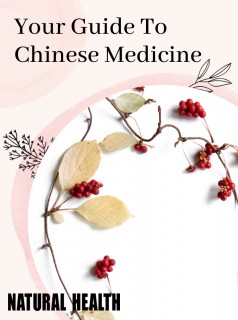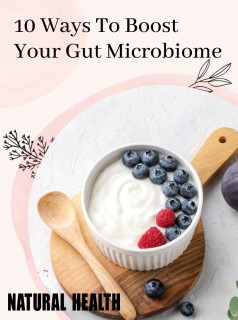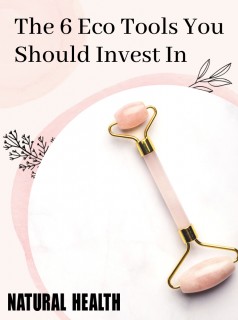Don’t let this debilitating condition get you down with this advice from holistic therapist Holly Jeffery
Don’t let this debilitating condition get you down with this advice from holistic therapist Holly Jefferyheadache . It can strike anywhere and any time, often without warning. Symptoms may include a crippling pain in the head, visual disturbances, sensitivity to light, dizziness and nausea, sometimes even vomiting and fainting. They can be difficult to control and can have a hugely debilitating effect on your life.
Migraine affects about 15 in every 100 people in the UK and is most common in adults aged between 20 and 50. Women are twice as likely to suffer from the condition as men.
If you consult your doctor they are likely to offer preventative medicine such as beta-blockers, antidepressants or strong painkillers that can be taken on the onset of an attack. Some people like to treat their symptoms more holistically however, and there is hope. It just takes a little bit of know-how and a determination to get well!
Nutritionist Ellen Grant is an expert on migraine prevention and an ambassador for the holistic approach. “I have been preventing migraine in my patients for the past 50 years without prescribing a single drug,” she says. “Headaches and migraine are usually warning symptoms of adverse reactions to some common foods, drinks, tobacco-smoking and hormone-taking. Avoiding these precipitants prevents most attacks.”
Just remember that migraine is surprisingly common; you are not alone. It doesn’t have to dominate your life. You can take control of it. Just find the determination to combat it and explore the suggestions detailed below. Your health is the most valuable thing you have; make it priority to get yourself well again. Wishing you the best of luck and a migraine-free future!
1. Stress less
High stress levels can cause migraine. Unfortunately migraine itself puts the body under huge amounts of stress, so sufferers can be caught in a vicious cycle. If migraine is dominating your life it may be time to exclude some of the more stressful elements you encounter. Maybe you could cut your working hours, drop some of your commitments and learn to say no to demanding friends or relations. Put your health as your number one priority. Make sure that you make time to do something for yourself every day. Time to completely relax and unwind. You may want to take up yoga or pilates or even meditation. Breathing exercises can be very useful too.
2. Food for thought
Food triggers are the cause of many cases of migraine. They vary vastly from individual to individual and determining which foods are bad for you can be a lengthy process. However, it can provide remarkable results so is certainly worth the effort.
Common migraine-triggering foods are cheeses, chocolate, caffeine, alcohol, wheat/gluten, MSG, processed foods and food additives, dried fruits, smoked meat and fish, bananas and citrus fruit. Allergy testing cannot provide a completely reliable result so unfortunately the only way to determine which foods are right for you is to test them yourself.
Initially, you may like to make a food diary. Detail exactly what you eat and drink and at what times of the day, detailing all migraine symptoms and other activities that occur. You may find patterns occurring instantly that expose certain foods as triggers. If this isn’t the case you will need to embark on an elimination diet.
An elimination diet involves going back to basics and eating only vegetables (except deadly nightshade vegetables such as peppers, aubergine, potatoes and tomatoes), fruit (except dried fruit and citrus), no dairy or wheat, no refined sugar, no processed foods. Try rice and grains, fish and healthy vegetables. You must also avoid caffeine and alcohol during this time.
It is vitally important that you eat a balanced and nutritious diet, maybe even supplementing with a multivitamin. As it could be easy to miss out on some vital vitamins and minerals, it would be advisable to seek the guidance of a nutritionist. There are also excellent books on the subject and some very worthy web-based articles.
Throughout the duration of your elimination diet you must drink plenty of water. After six weeks on this diet you may slowly introduce the foods that you eliminated. Only introduce one food within a 48-hour period as it can take this long for symptoms to develop. You may like to just introduce one food a week. This is a very effective way of combating migraine, but must be done with great care and consideration and professional guidance.
3. Happy hormones
Research has shown that fluctuations in the chemical serotonin in the brain can cause migraine. Those suffering from depression commonly experience migraine symptoms and migraine sufferers often experience depression. Serotonin levels are also linked to depression. For these reasons it is a good idea to think about maintaining a healthy level of serotonin. Essential fatty acids are vital for brain and mood health and can be consumed in oily fish or in dietary supplements. Aim for two to three servings of oily fish a week. There are also some great vegetarian supplements on the market.
Exercise is another effective way to boost serotonin and, best of all, it’s free. Just 15 to 20 minutes a day is ideal, preferably outdoors so you can get a dose of mood-enhancing sunshine too. Sunshine breaks down melatonin which is a serotonin suppressor. Avoid stimulants such as alcohol, sugar and caffeine which all break down serotonin. Get lots of sleep too. Your body needs sevenhours of continuous sleep every night in order to produce enough serotonin for the next day.
4. Pinning down the problem
Many people have experienced very effective results in migraine prevention by using acupuncture. According to the theories of ancient Chinese medicine, acupuncture increases the blood flow to the brain, relieving migraine symptoms and freeing the area. Acupuncture has also been shown to balance serotonin levels and release endorphins (the body’s natural painkillers). Although there is still a lot of research being done to prove the effectiveness of acupuncture it cannot harm you in any way and many people find it to be a very relaxing and soothing experience.
This is nicely summarised by acupuncture practitioner Louise Webster. She says: “Acupuncture works on the premise that there are subtle energies that flow through the body, mind and spirit. A symptom such as frequent migraine is an indication that there is an imbalance in this energy flow, sometimes in combination with pre-existing underlying or lifestyle factors. An acupuncturist can address the cause of any imbalance with the insertion of very fine needles at specific points on the body. As the energy flow becomes more balanced and harmonised, symptoms reduce and often disappear altogether, with many patients also reporting a greater sense of wellbeing between treatments.”
5. Scentsations
Aromatherapy is a very effective way of preventing migraine or soothing the symptoms of an attack. For a bath combine three drops of lavender, two drops of rose and two drops of Roman chamomile into an eggcup of milk (use soya milk if you are avoiding dairy). Adding essential oils directly into a bath will just cause them to evaporate. If you combine them with milk first they will adhere to the protein particles in the milk and then disperse evenly into the bath water. Lavender is very effective against migraine as it is a powerful analgesic as well as being calming, relaxing and lowering blood pressure. Rose soothes and calms anxiety. Chamomile reduces tension and is calming and has a sedative effect.
Lavender oil is one of the few oils that can be applied neat to the skin. You may like to apply a few drops of the oils to your fingertips and gently rub across the temples and forehead. You could also add a few drops to a pillow or tissue during an attack.
For a massage blend add three drops of lavender, three drops of marjoram and three drops of peppermint to 30ml of sweet almond oil (or grapeseed oil if you suffer from a nut allergy). Marjoram is a powerful analgesic as well as being balancing and helpful for lifting depression. Peppermint is known for aiding nervous exhaustion, relieving stress, aiding mental fatigue and working as a local anaesthetic. You couldrub this blend into your shoulders and neck or ask a friend or family member to massage your back with it.
6. What you really knead
Massage is a really powerful way of releasing all the stress and tension that has built up in your muscles. Migraine can cause more tension in the muscles of the neck, head and upper shoulders so it may be worth seeing a massage therapist regularly. Migraine can be caused by constriction of the blood vessels in the head. Relaxing this whole area and releasing all the muscle tension can be a powerful way to soothe migraine.
7. Monthly cycle
There may be a link between a woman’s hormone cycle and migraine. Women who are taking oral contraceptives may want to consider using an alternative method of contraception (for example a barrier method). Woman on hormone replacement therapy may wish to consider using natural methods. Unfortunately it may take up to 12 months for your body to be free from hormones.
Leafy greens such as kale, brocolli and cabbage help the liver to process oestrogen so are very useful, as well as being rich in iron.
Another thing to consider doing is ditching tap water in favour of filtered water as tap water contains a lot of chemicals including oestrogen.
Holly Jeffery worked as a massage and holistic therapist for many years before becoming a freelance writer. Her personal debilitating battle with migraine was successfully conquered using the methods explored...
Discover more
Holly Jeffery worked as a massage and holistic therapist for many years before becoming a freelance writer. Her personal debilitating battle with migraine was successfully conquered using the methods explored...
Discover more























